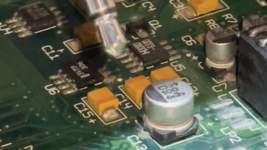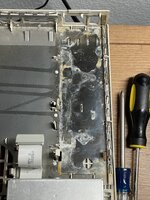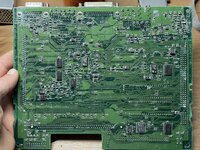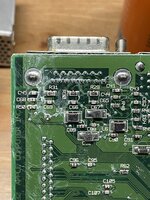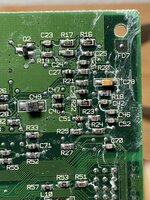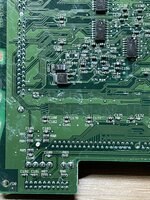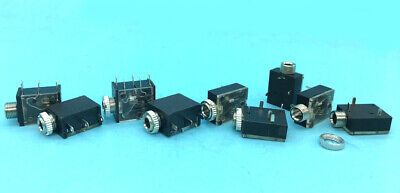theirongiant
Active member
I have an LC III that boots and runs normally, but the internal speaker doesn't work. Well, at least I thought it didn't at first.
External audio works; I heard the startup chime, quacks, and wild eeps through headphones. By accident I was pushing the headphone jack while turning it back on, and the internal speaker played the boot chime. So I tried manipulating the jack with mixed results, and made a video recording of my experiments. (The audio on this video is captured by a Shure MV88+ microphone plugged into my iPhone and resting right next to the speaker. I unplugged the fan for these tests.)
See attached video, with sound on.
Perhaps you can advise me on next steps to repair this? I've already used 99% isopropyl alcohol and a toothbrush on the logic board, and sprayed some WD40 contact cleaner inside the headphone jack. No luck. Is it time to replace the jack? Is this a difficult part to find?
External audio works; I heard the startup chime, quacks, and wild eeps through headphones. By accident I was pushing the headphone jack while turning it back on, and the internal speaker played the boot chime. So I tried manipulating the jack with mixed results, and made a video recording of my experiments. (The audio on this video is captured by a Shure MV88+ microphone plugged into my iPhone and resting right next to the speaker. I unplugged the fan for these tests.)
See attached video, with sound on.
Perhaps you can advise me on next steps to repair this? I've already used 99% isopropyl alcohol and a toothbrush on the logic board, and sprayed some WD40 contact cleaner inside the headphone jack. No luck. Is it time to replace the jack? Is this a difficult part to find?

